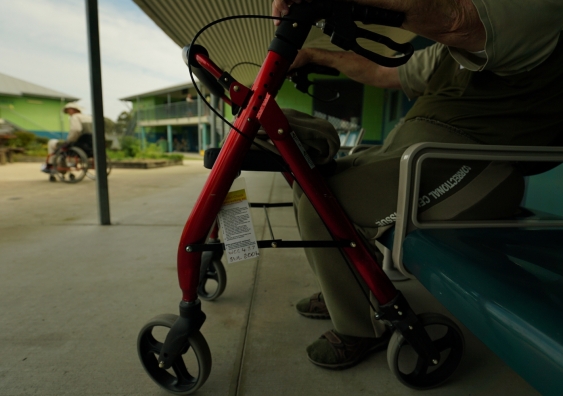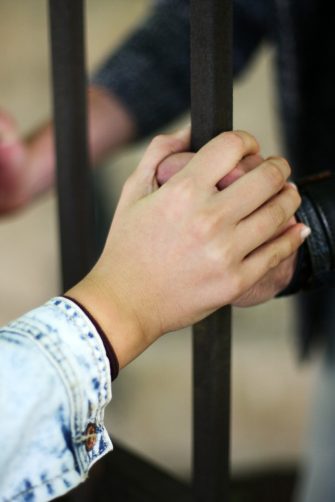We all know what goes on in prison. Or do we? A study examining sexual behaviour and sexual culture in jails in NSW and Queensland suggests that popular beliefs about prison sex are largely myths.
We all know what goes on in prison. Or do we? A study examining sexual behaviour and sexual culture in jails in NSW and Queensland suggests that popular beliefs about prison sex are largely myths.
Contrary to portrayals of jails as sexually rampant places, a survey by the University of New South Wales (UNSW) found only 7% of male prisoners had had sex with another prisoner, while for female prisoners the number was higher at around one-third. And when sex did happen it was overwhelmingly consensual.
"Sexual coercion seems to be a disappearing phenomenon in prisons," said co-author of the study, Professor Basil Donovan, who is head of the Sexual Health Program at UNSW's Kirby Institute*.
"Only 2.5% of male prisoners and 3.9% of female prisoners reported that they had been forced or frightened into unwanted sexual activity. For almost half of those who reported coercion, this had only occurred once and for some the event dated back decades.
"With 60% of women and 13% of the men reporting sexual coercion - including rape - prior to their imprisonment, our evidence suggests that these people are at less risk of sexual coercion and rape inside prison than outside," Professor Donovan said.
"The reasons for sexual coercion fading out of prisons probably reflects a much improved prison culture, more sympathetic management applying the principle of duty-of care, fewer prisoners per cell, and video surveillance," he said.
This did not mean that misapprehensions about prison sex were trivial.
"Men and women who are about to be imprisoned fear what will happen, with about a third believing they will be sexually assaulted in prison," said the study's lead author, Professor Tony Butler, head of the Justice Health Program at the Kirby Institute.
"Defence lawyers regularly use 'rampant' prison rape as an argument for their clients to avoid custodial sentences. And the NSW Department of Corrective Services has supplied 30,000 condoms a month to prisoners since 1996 as part of their perceived duty-of-care."
As part of the survey, researchers questioned representative samples of 900 men and 134 women in 14 Queensland prisons and 1,118 men and 199 women in 28 NSW prisons. (The states were selected because NSW prisons distribute condoms and dental dams while Queensland does not).
Of the 7% of men who had engaged in sex, most (79%) said they did it for pleasure (for the majority sex was only occasional and did not involve anal intercourse), while 15% said they did it to garner protection. Only rarely did male prisoners have sex in return for drugs (2%) or other goods (4%). Interestingly, 10 of the 26 men who identified as gay reported having no sex while in prison.
Female prisoners were much more sexually active: 36% reported sex with other inmates, with oral sex involved in about 60% of encounters.
Professor Donovan said with so little anal sex occurring in male prisons, sex cannot account for the use of 30,000 condoms a month in NSW jails. So, what happens to all those condoms and dams?
"Before condoms were introduced into NSW prisons there were strong objections by prison officers who thought that they might encourage more sex and rape, or be used as weapons. These predictions were wrong," Professor Donovan said.
"The uses of condoms are varied. Some are liberated of their lubricant to be used as hair gel, others are used as household ties or masturbatory aids.
"Dental dams in women's prisons are rarely used for oral sex. Instead they are reborn as tobacco pouches, hair bands, and doilies."
A paper based on the research appears in the Journal of Interpersonal Violence. A second paper is published in the magazine HIV Australia this month.
Collaborating in the research were the Sexual Health Program and the Justice Health Program of the Kirby Institute, and UNSW's School of Public Health and Community Medicine. Funding was provided by the NHMRC with additional resources from the NSW Health Department, Queensland Corrective Services, NSW Justice Health, UNSW Faculty of Medicine, and the National Drug Research Institute.
Read latest stories
-

Are antimicrobial condoms the new frontier against STIs? Not quite…
-

Prisons weakest link in the fight against blood borne viruses in Australia
-

Incarcerated people with disability don’t get the support they need – that makes them more likely to reoffend
-

Anatomy texts should show sex as a spectrum to include intersex people




